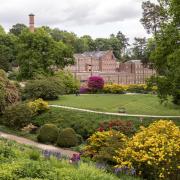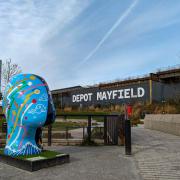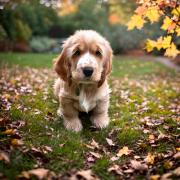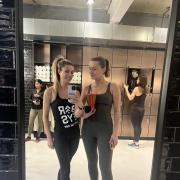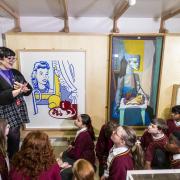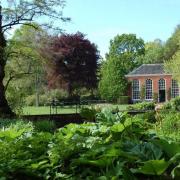It is one of the great treasures of Greek civilisation, but a version of it is taking shape on a kitchen table in Stalybridge

Sculptor Irene French has sold her bronze equine statues to the likes of Formula One world champion Nigel Mansell and round-the-world yachtsman Cornelius can Rietschoten.

Every year, she sees one of her bronze artworks presented to the winners of the prestigious American Breeders’ Cup. But her latest work is a horse in search of a home: a reproduction of one of the great relics of ancient Greece - a sculpture she would love to see turned into a sporting trophy.
As she welcomes me into her semi-detached home in Stalybridge, I notice a sculpture of a horse’s head on a radiator in the hall. In the lounge, various of her horsey artworks are dotted around. Then in the kitchen, resplendent on the kitchen table and wrapped in cling film to avoid drying out, is a majestic white horse, fashioned from the same kind of plasticine used to create Wallace and Gromit.
Irene reaches into her fridge, pulls out a plasticine figure and places it on the horse. And there it is: a scaled-down reproduction of The Horse and Jockey from Artemision - a sculpture which lay on the seabed for 2,000 years, but which now takes pride of place in the National Archaeological Museum in Athens
‘I’d never seen anything so beautiful,’ says Irene, recalling the first time she saw a photograph of the horse’s head. ‘There is a school of thought that it was probably commissioned by Alexander the Great. The story is that Alexander the Great, or whoever, had it outside the Olympic Games stadium, because horse racing was the most important part of the games.
‘That’s why I want it to be a trophy. It really signifies the beginnings of racing.’
The statue may have been plundered, but then lost in a shipwreck over two millennia ago. But then in the 1920s and 1930s, pieces of it were found off Cape Artemision, Greece, and the work was put back together, the missing pieces filled in with plaster and the whole work then re-cast in bronze.
At 78, Irene has spent almost half her life sculpting horses. She was born in Devon, but her late father Leslie Dutton came from an old Cheshire family. After moving to Stalybridge during the Second World War, Irene became a stable girl at Pinfold Stud in Marthall, Knutsford, then worked in Newmarket for various stables. She recalls riding behind Lester Piggott many times on the gallops.
‘He never spoke to anybody in those days,’ says Irene. ‘He had a lisp and people used to make fun of him, so he wouldn’t speak.’
She married in her mid-20s, had two children and lived in Dorset, keeping a stud of Welsh cobs. Then aged 40, Irene took up sculpture, becoming a founder member of the Society of Equestrian Artists.
‘I’ve always done it for my own amusement, but I was amazed when people wanted to buy them,’ says Irene, who moved back to Stalybridge seven years ago after divorcing.
One of her sculptures made in resin may cost £200 or more, but a version in bronze has a price tag of £2,000-plus.
One customer was Nigel Mansell, who Irene approached having completed a sculpture which she realised bore a close resemblance to the prancing stallion of the Ferrari emblem.
‘He only lived down the road, so I went to see him,’ says Irene. ‘He invited me to tea and liked it so much he bought three.’
Another customer was industrialist-turned-yachtsman Cornelius can Rietschoten - twice winner of the Whitbread Round the World Race.
‘He came to my house and finished up buying more of my work than anyone else has,’ says Irene. ‘He used to buy them to give to friends.’
In the 1980s, Irene was commissioned to produce a scaled-down copy of a 16th century horse sculpture to be used as a prize for winners of the American Breeders’ Cup. One of the recipients was her old Newmarket galloping companion Lester Piggott.
‘I was in heaven when I was at Newmarket,’ says Irene. ‘The horses were so fantastic and they are looked after with such love and care. It gets me when people say racehorses are badly treated. They have a wonderful life.’






